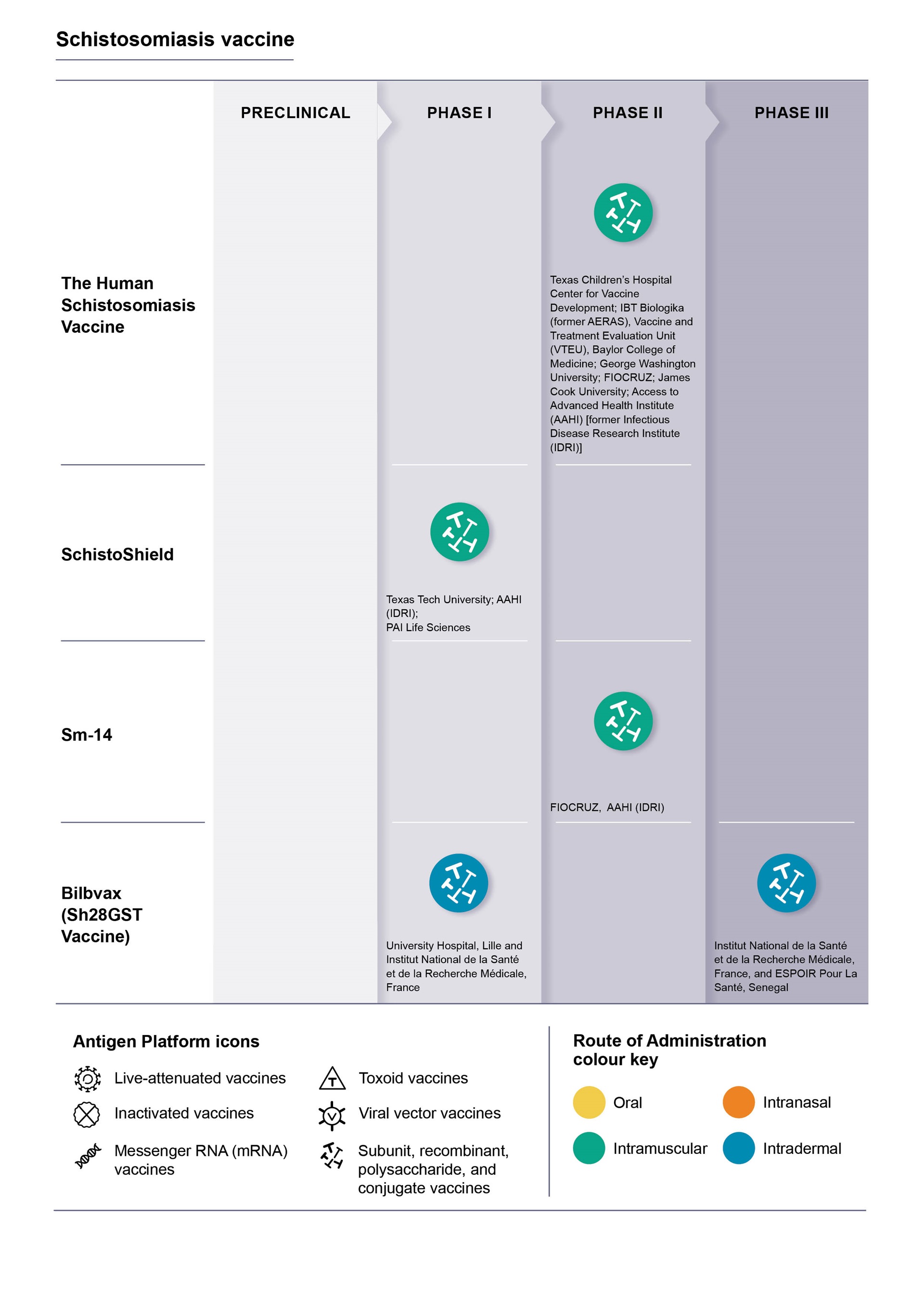Schistosomiasis
Introduction
Schistosomiasis is a disease of poverty that leads to chronic ill-health. Infection is acquired when people come into contact with fresh water infested with the larval forms (cercariae) of parasitic blood flukes, known as schistosomes. The microscopic adult worms live in the veins draining the urinary tract and intestines. Most of the eggs they lay are trapped in the tissues and the body’s reaction to them can cause massive damage.
Schistosomiasis affects almost 240 million people worldwide, and more than 700 million people live in endemic areas. The infection is prevalent in tropical and sub-tropical areas, in poor communities without potable water and adequate sanitation. Urogenital schistosomiasis is caused by Schistosoma haematobium and intestinal schistosomiasis by any of the organisms S. guineensis, S. intercalatum, S. mansoni, S. japonicum, and S. Mekongi.
Several million people all over the world suffer from severe morbidity as a consequence of schistosomiasis.
For more on schistosomiasis and other neglected tropical diseases, visit:
WHO meetings
External links and publications
References:
1) Molehin AJ, Rojo JU, Siddiqui SZ, Gray SA, Carter D, Siddiqui AA. Development of a schistosomiasis vaccine. Expert Rev Vaccines. 2016;15(5):619-627. doi:10.1586/14760584.2016.1131127
2) Molehin, A.J. Schistosomiasis vaccine development: update on human clinical trials. J Biomed Sci 27, 28 (2020). https://doi.org/10.1186/s12929-020-0621-y
Vaccine Pipeline
Updated April 30, 2022

